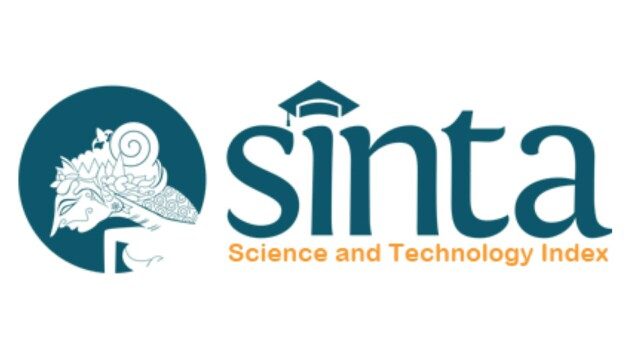Analisis Tekstur Fraktal untuk Pengenalan Motif Batik dengan Metode SVM-RBF
Sari
This research discusses the recognition and classification of batik motifs using the Fractal Texture Analysis-based Segmentation (SFTA) method integrated with Support Vector Machine (SVM). Batik, as an Indonesian cultural heritage, is the art of painting silk cloth with various motifs and patterns that reflect cultural values. To address the challenge of recognizing diverse batik motifs, this study proposes a fractal-based approach for extracting features from batik images. This method measures the fractal dimension of the image using the Box Counting Method, allowing it to depict unstructured organic textures with high precision. The extracted fractal features are then processed using various feature selection methods such as Chi-Square, Mutual Information, Variance Threshold, and others. Experimental results show that the "Dispersion Ratio" feature selection method achieves the highest accuracy of approximately 69.93% with SVM-RBF parameters (C=80), demonstrating its ability to identify relevant features for batik motif recognition. These findings make a significant.
Kata Kunci
Teks Lengkap:
PDFReferensi
Y. Sari, M. Alkaff, and R. A. Pramunendar, “Classification of coastal and Inland Batik using GLCM and Canberra Distance,” AIP Conference Proceedings, vol. 1977, 2018, doi: 10.1063/1.5042901. [2] M. F. Omar, M. N. Mansor, and S. A. Saidi, “SFTA and GLCM via LDA Classifier for Skin Cancer Detection,” IOP Conference Series: Materials Science and Engineering, vol. 932, no. 1, pp. 0–6, 2020, doi: 10.1088/1757-899X/932/1/012068. [3] Ş. Öztürk and B. Akdemir, “Application of Feature Extraction and Classification Methods for Histopathological Image using GLCM, LBP, LBGLCM, GLRLM and SFTA,” Procedia Computer Science, vol. 132, no. Iccids, pp. 40–46, 2018, doi: 10.1016/j.procs.2018.05.057. [4] F. U. Karimah and A. Harjoko, “Classification of Batik Kain Besurek Image Using Speed Up Robust Features (SURF) and Gray Level Co-occurrence Matrix (GLCM),” 2017, pp. 81– 91. doi: 10.1007/978-981-10-7242-0_7. [5] T. Handhayani, J. Hendryli, and L. Hiryanto, “Comparison of shallow and deep learning models for classification of Lasem batik patterns,” Proceedings - 2017 1st International Conference on Informatics and Computational Sciences, ICICoS 2017, vol. 2018-Janua, pp. 11–16, 2017, doi: 10.1109/ICICOS.2017.8276330. [6] N. Sulistianingsih, I. Soesanti, and R. Hartanto, “Classification of batik image using grey level co-occurrence matrix feature extraction and correlation based feature selection,” 2018 International Seminar on Research of Information Technology and Intelligent Systems, ISRITI 2018, pp. 492–497, 2018, doi: 10.1109/ISRITI.2018.8864237. [7] R. Andrian, M. A. Naufal, B. Hermanto, A. Junaidi, and F. R. Lumbanraja, “K-Nearest Neighbor (k-NN) Classification for Recognition of the Batik Lampung Motifs,” Journal of Physics: Conference Series, vol. 1338, no. 1, pp. 0–6, 2019, doi: 10.1088/1742- 6596/1338/1/012061. [8] R. Fahrizal, R. P. Parlindungan Siahaan, and R. Wiryadinata, “Banten batik classification with backpropagation neural network,” MATEC Web of Conferences, vol. 218, pp. 1–9, 2018, doi: 10.1051/matecconf/201821803012. [9] Y. Gultom, A. M. Arymurthy, and R. J. Masikome, “Batik Classification using Deep Convolutional Network Transfer Learning,” Jurnal Ilmu Komputer dan Informasi, vol. 11, no. 2, p. 59, 2018, doi: 10.21609/jiki.v11i2.507. [10] A. F. Costa, G. Humpire-Mamani, and A. J. M. H. Traina, “An efficient algorithm for fractal analysis of textures,” Brazilian Symposium of Computer Graphic and Image Processing, pp. 39–46, 2012, doi: 10.1109/SIBGRAPI.2012.15.
DOI: https://doi.org/10.24176/simet.v15i2.11175
Refbacks
- Saat ini tidak ada refbacks.
Indexed by:





Simetris : Jurnal Teknik Mesin, Elektro dan Ilmu Komputer is licensed under a Creative Commons Attribution-NonCommercial-ShareAlike 4.0 International.
Dedicated to:













